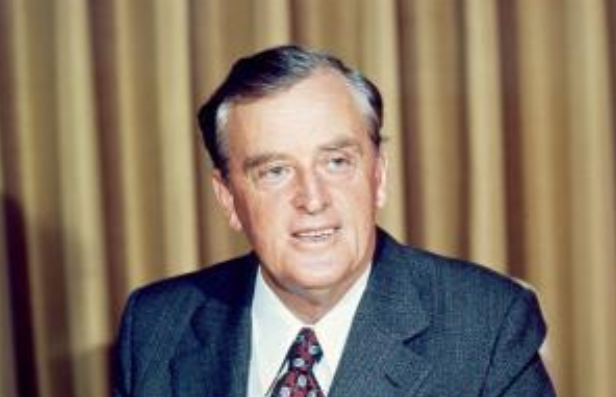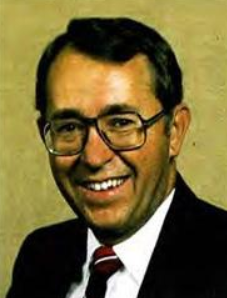
This week (October 22) saw the fortieth anniversary of the unexpectedly early 1983 Queensland state election which ended the 27-year Coalition and allowed Joh Bjelke-Petersen’s Nationals to govern in their own right. Its impacts on Queensland politics still reverberate today. But more than that it had national implications by splitting the federal Coalition, almost destroying John Howard’s career and contributing to federal Labor’s record 13-year run in office.
Yet few remember this landmark election or understand what happened.
The 1983 election was triggered by Liberal minister Terry White, who in August 1983, broke ranks with his Coalition cabinet ministers and voted with a clique of Liberal backbenchers to change the order of business in parliament on behalf of their motion for a public accounts committee. It was easily defeated, though supported by the Labor opposition. White was immediately sacked by his own Liberal leader and deputy premier, Dr Llew Edwards, for ostensibly failing to maintain cabinet solidarity. White then replaced Edwards as leader. The Liberals had been under increasing electoral  pressure from the Nationals, so White’s revolt was seen as a sign that they were at last willing to stand up to the Premier and his dictatorial ways.
pressure from the Nationals, so White’s revolt was seen as a sign that they were at last willing to stand up to the Premier and his dictatorial ways.
As the new Liberal leader, White (right) assumed he would take over Edwards’ roles as treasurer and deputy premier, rejoin cabinet, capitalise on his high profile, articulate a more ‘liberal’ policy approach that would restore his party’s fortunes to such an extent that it would become the Coalition’s senior partner. This was not to be.
Premier Bjelke-Petersen would not accept White for the same reasons Edwards had sacked him – he had broken cabinet solidarity. Within weeks the Coalition had split, the Nationals retained office, prorogued parliament, called a snap election and won in their own right. The Liberals were vanquished, reduced to six seats and relegated to the cross-bench – neither in government nor the opposition.
Liberals erroneously believed the Nationals couldn’t govern effectively without them. That was soon proved wrong. Having quickly dumped White, they thought if they sat pat, didn’trock the boat and supported the Nationals in parliament the electoral pendulum would swing back and they would be back in office. This didn’t happen either. Instead, at the subsequent 1986 election the Nationals consolidated their hold on power. Liberals remained stuck on the crossbench.
However, this National Party success generated considerable hubris and a belief that their state success could be duplicated nationally. Driven by the federal Coalition’s two recent election losses in a row (1983 and 1984), dissatisfaction with John Howard’s leadership, encouraged by big business promises of financial support, and desiring a more conservative policy agenda, the Nationals began the ‘Joh for PM’ campaign. Its aim was to completely take over non-Labor politics in Australia.
As history records, it was a disaster at both national and state levels.
Nationally, it caused the federal Coalition to split, the Hawke government to call and win an early election with the ‘Joh for PM’ campaign producing no substantive gains. Further, Howard’s leadership was destabilised, leading to his replacement in 1989 and making him appear, until his return to the leadership role six years later, a spent force. Even when the Coalition parties were back together. considerable distrust between them continued for some time, which combined with the high turnover of federal Liberal leaders (Peacock, Hewson, Downer then back to Howard) contributed to the Coalition being out of office for such an long and unprecedented period (1983-1996).
In Queensland, the failed ‘Joh for PM’ campaign soon undermined Petersen’s hold on power. He became increasingly erratic and was quickly replaced as premier in December 1987. Two premiers followed in quick succession. More importantly, the Canberra venture had so distracted the National Party leadership that the Fitzgerald inquiry into police corruption had been allowed to be appointed. Its critical report in 1989 and the continuing split in Coalition ranks, caused a landslide Labor win that, again, completely bypassed the Liberals.
Although the Coalition returned to office in 1996, its time was short lived (Borbidge government 1996-8), as was the subsequent Newman landslide of a decade or more later (2012-2015). Indeed, by the time the next election in 2024, the Coalition parties, now re-united under the Liberal National Party banner, will have held office for only five of the past thirty-five years. As the election results during those days in the wilderness demonstrate, they have never been able to articulate a consistent policy agenda that appeals both to their own supporters and the general voter.
Scott Prasser, Senior Fellow at the Centre for Independent Studies,has written on federal and state politics. He is the co-editor of The Art of Opposition, which will be released in December 2023.
Further reading:
Prasser, S., “The Coalition 1987-95: A Marriage of Convenience?” in Lovell, D., and Blyth, A., (eds), The Art of Coalition: The Howard Government Experience 1996-2007, Sydney, UNSW Press, 2021, 26-47 & 184-6
Newman, C., Can Do: Campbell Newman and the Challenge of Reform, Connor Court Publishing, 2015
Jones, K., and Prasser, S., “‘Can-do’ shies away from the principled path of government,” Public Sector Informant, Canberra Times, 1 May 2012 (on Newman Government’s mistakes)
White, T., (with Koch, T.), A Prescription for Change: The Terry White Story, 2010
Prasser, S., and Wear, R., “Non-Labor Politics in Queensland: Fusion or Fission?,” Current Affairs Bulletin, Vol 66, No 8, January 1990, 22-30
Prasser, S., “Queensland Liberals: The Party’s Over,” Current Affairs Bulletin, Vol 63, No 10, March 1987, 19-26
Prasser, S., “The Liberal Party in Queensland,” Current Affairs Bulletin, Vol 60, No 10, March 1984, 24-30
 Sign In
Sign In 0 Items (
0 Items ( Search
Search









To beat a familiar theme a longer term effect of Joh’s abandoning its Country Party roots in rebranding as the National Party saw the Country, always junior but authentic in its field, in terms of power, relegated to Hicksville status – the Bush – by the City based Liberal Party once Howard did become PM. Howard, and Janette, couldn’t drag themselves away from within smelling distance of salt water and made clear their disdain for the Country by this decision and Howard’s constant reference to the Bush. However this article is a reminder of how he and she may well have felt after Joh’s cunning power play seemingly, at the time, robbed them of their path to The Lodge, oops Kirribilli House.
All sorts of people say all sorts of things about Joh and just about everybody has an opinion that differs wildly, scoundrel, sinner, saint, naïve, you name it and Milan Brich’s Hydrogen powered car was but one of Joh’s supposedly displays of naivety. Joh never forgot a face or a detail about someone he had met if only briefly, a perfect politician. Pickering had a field day with him of course, ditto LLew and many of Joh’s mob but I think the best way to describe Joh is by using a PNG term for a missionary. “God Botherer” and that sums it up for he, Morrison, Nile, and a whole bunch of other “God Botherers” who have entered politics, scoundrels to some of us, saints to others, and enigmas in general.
Reading this article, I kept thinking on the old political adage “Disunity is Death”.